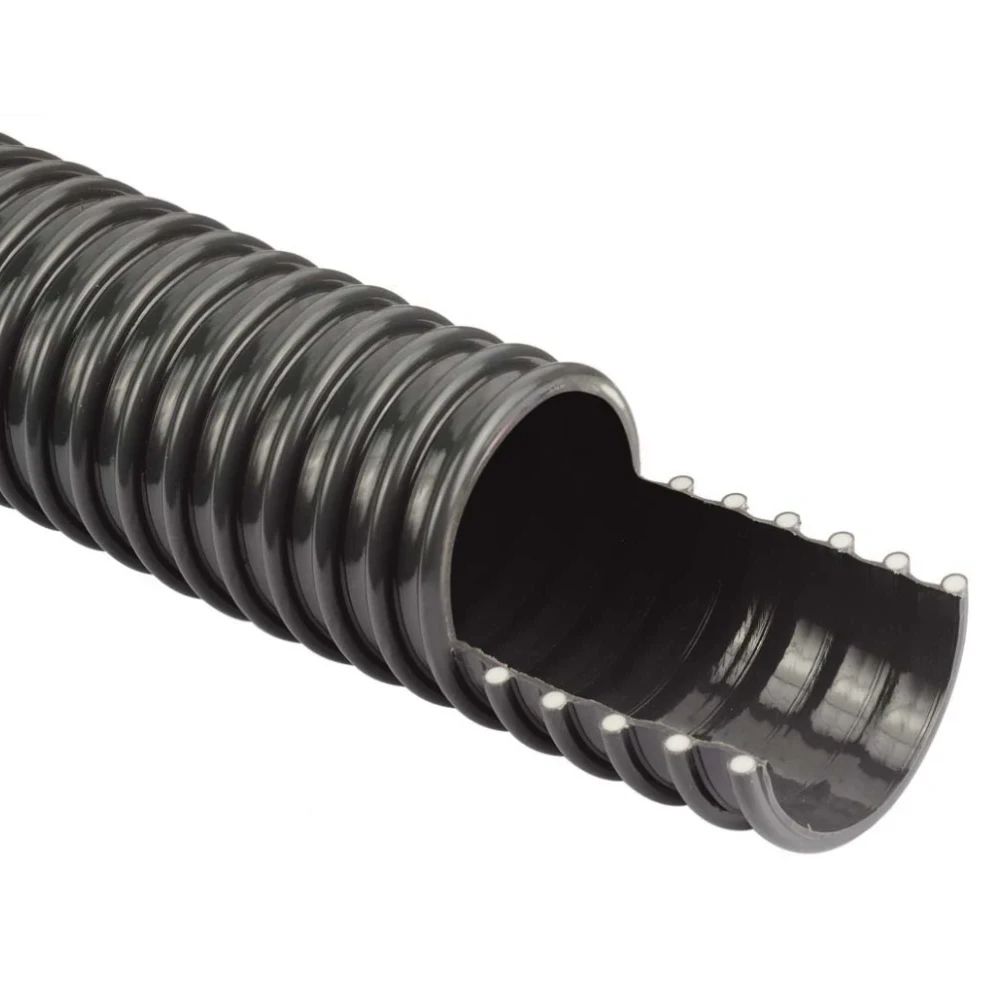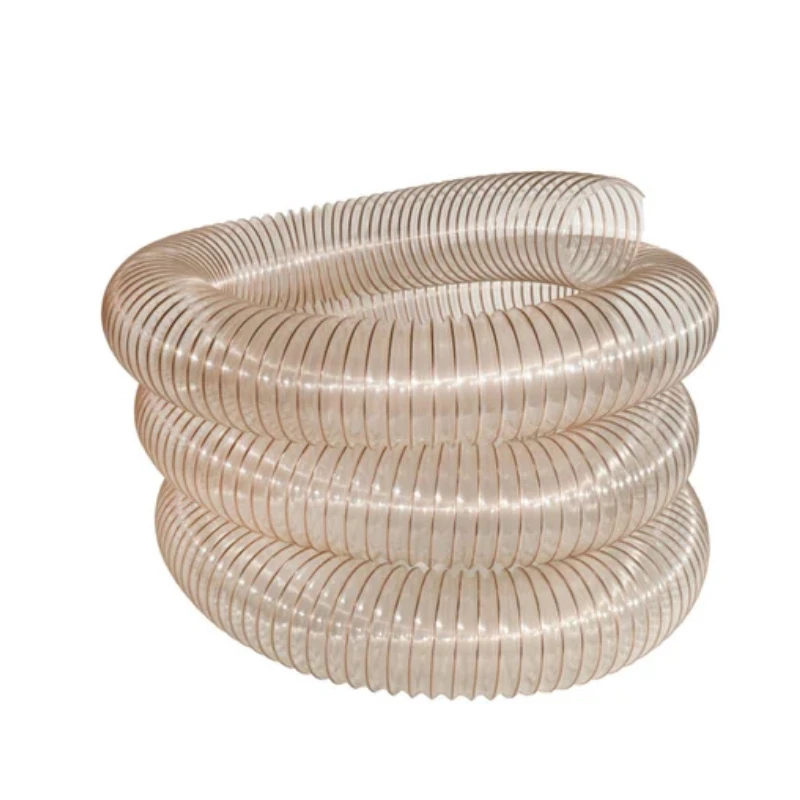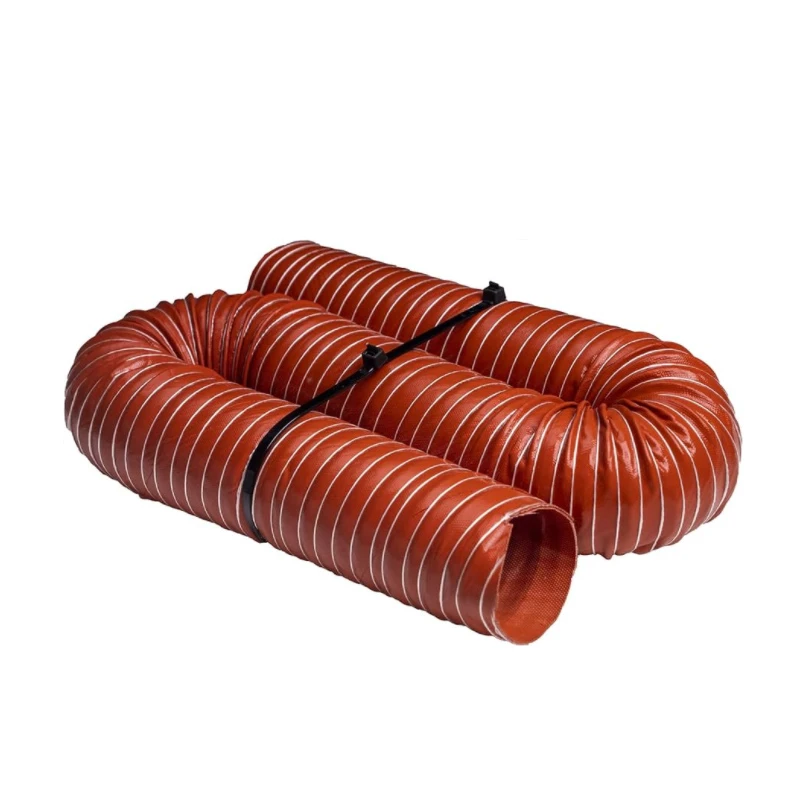Duct & Vacuum Hose
Duct and vacuum hoses are specialized hoses designed for efficient air, dust, fume, and particulate transport in industrial, construction, and commercial applications. Constructed with durable, flexible materials such as PVC, rubber, or polyurethane, these hoses offer excellent abrasion resistance and long service life even in harsh environments.
One of the primary features of duct and vacuum hoses is their flexibility combined with structural strength. They are often reinforced with spiral wires or embedded helixes to prevent collapse under vacuum pressure while maintaining the ability to bend and maneuver around equipment or obstacles. This makes them ideal for suction, ventilation, dust collection and air handling systems.
The smooth inner lining of these hoses minimizes airflow resistance, maximizing efficiency in transferring air and particulate matter. Their outer surface is engineered to resist cuts, abrasions, UV radiation, and chemicals, ensuring durability in both indoor and outdoor use.
Duct and vacuum hoses are available in a variety of diameters and lengths, allowing customization to fit specific system requirements. They are compatible with standard fittings and connectors, simplifying installation and integration with existing ductwork or vacuum equipment.
With temperature resistance typically ranging from -20°C to +80°C, these hoses perform reliably in various climate conditions and industrial settings. They are widely used in woodworking shops, factories, automotive paint booths, HVAC systems, and construction sites.
In summary, duct and vacuum hoses combine flexibility, strength, and durability to provide efficient air and particulate transport solutions. Their robust design and versatile applications make them essential for maintaining clean, safe, and efficient working environments.
What Is the Difference Between a Pressure Hose and a Vacuum Hose?
Pressure hoses and vacuum hoses serve different purposes and are designed with distinct features to handle their specific functions.
Pressure Hose:
A pressure hose is engineered to carry fluids or gases under positive pressure. It is built to withstand high internal pressures without bursting or deforming. Typically, pressure hoses have reinforced walls made from materials like braided steel, synthetic fibers, or multiple rubber layers to provide strength and durability. These hoses are commonly used in hydraulic systems, high-pressure water delivery, fuel lines, and industrial machinery. They must be able to resist not only internal pressure but also external wear, temperature fluctuations, and chemical exposure.
Vacuum Hose:
Vacuum hoses, on the other hand, are designed to transport air, gases, or fluids under negative pressure (vacuum). Their primary function is to maintain structural integrity and prevent collapse when subjected to suction forces. Vacuum hoses usually have reinforced structures, such as spiral wire or helix supports, embedded within flexible materials like PVC or polyurethane. They are commonly used in dust collection, ventilation, fume extraction, and suction systems. Unlike pressure hoses, vacuum hoses must resist external atmospheric pressure pushing inward rather than high internal pressure pushing outward.
Key Differences:
Pressure hoses handle high internal pressure; vacuum hoses handle negative pressure (suction).
Pressure hoses need reinforcement to avoid bursting; vacuum hoses need reinforcement to avoid collapsing.
Materials and construction differ to suit these opposite stresses.
In summary, while both hoses transport fluids or gases, their design priorities reflect the pressures they must endure—internal for pressure hoses and external for vacuum hoses.
Is Silicone Hose Good for High Heat?
Yes, silicone hose is widely recognized for its excellent performance in high-heat environments. Made from high-quality silicone rubber, these hoses offer outstanding thermal stability, allowing them to operate reliably in temperatures ranging from -60°C to +260°C (-76°F to 500°F). This broad temperature range makes silicone hoses ideal for applications where heat resistance is critical.
One of the main advantages of silicone hoses is their ability to maintain flexibility and strength even at extreme temperatures. Unlike traditional rubber hoses, which may become brittle, crack, or degrade when exposed to heat, silicone hoses resist aging, hardening, and deformation. This durability helps prevent leaks and failures in systems exposed to engine heat, hot fluids or high-temperature air.
Silicone hoses are commonly used in automotive engine bays, turbocharger systems, heating and cooling systems, and industrial machinery where consistent heat resistance is essential. Their smooth inner lining also helps optimize fluid or air flow while minimizing pressure loss.
Additionally, silicone hoses resist chemical degradation from coolants, oils and ozone, further enhancing their longevity in harsh environments. However, it is important to note that while silicone hoses excel in heat resistance, they are not typically recommended for direct fuel or oil transfer, as certain fuels can degrade silicone over time.
In summary, silicone hoses are an excellent choice for high-heat applications due to their thermal stability, flexibility, and durability, making them a trusted solution in both automotive and industrial settings.







